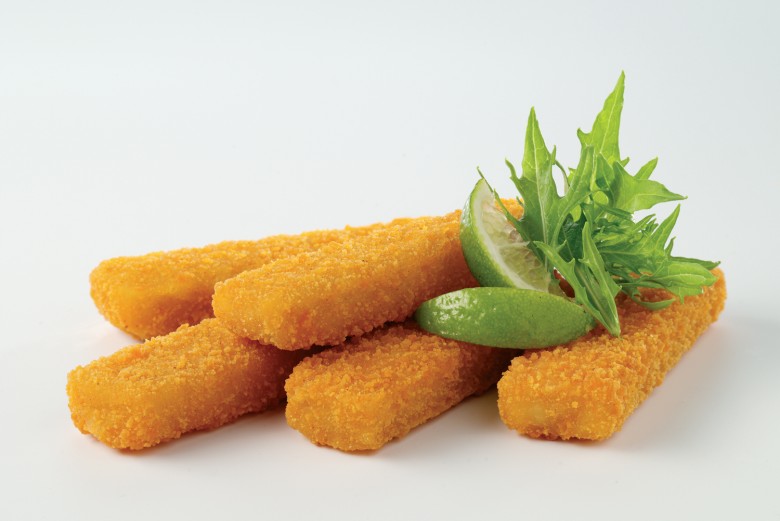
Fish fingers are a quick, tasty meal for people, but if you’re a dog owner, you might wonder if they’re safe for your pet. While some types of fish are good for dogs, not every human food is a good fit for their diet, so it’s important to know what’s safe before you offer it to your pup.
What Are Fish Fingers Made Of?
Fish fingers are usually made from white fish like cod or haddock, covered in breadcrumbs, and fried or baked. While fish itself can be healthy for dogs, the breading, oils, and additives make fish fingers less suitable. Fried foods add extra fat and calories, and many fish fingers have added salt and artificial flavors that are harmful to dogs. If you want to give your dog fish, plain, cooked fish without any extras is a much better option.
Can dogs eat fish fingers?
Veterinarians generally don’t recommend giving dogs fish fingers. Although, the fish itself can be good for dogs, the breading, salt, and oils in fish fingers aren’t. The American Kennel Club suggests feeding dogs plain, cooked fish instead, as processed foods can harm them over time.
What is the nutritional value of fish in fish fingers?
Cod or haddock fish are a good source of proteins and omega-3 fatty acids, which improve the skin, coat, and joints of a dog. You also get Omega-3s from fish and they are popular for reducing inflammation and boosting a dog’s immune system. In fish fingers, though, the goodness of fish is outweighed by the too much salt, fat, and preservatives.
Why are fish fingers bad for dogs?
Here’s why I wouldn’t recommend this treat for your pup.
Salt Content: The salt content in the fish fingers is too much for dogs to consume and it may lead to dehydration and kidney strain, and over time can cause serious problems like high blood pressure or kidney damage.
Breading and Oils: The breading and frying process adds unnecessary fats and carbs. Fried foods can upset your dog’s stomach and also contribute to obesity, thus increasing heart-related issues and diabetes.
Additives and Preservatives: There are quite a few additives present within fish fingers that are harmful to dogs. These additives may lead to allergic reactions or other health issues, as dogs struggle to process them.
What if my dog has eaten fish fingers?
If your dog eats fish fingers, they might experience short-term effects like an upset stomach, diarrhea, or vomiting from the greasy ingredients. Over time, regular consumption could lead to weight gain, pancreatitis, or salt toxicity, all of which can seriously impact their health.
What are the healthier fish alternatives for dogs?
If you want to give your dog to enjoy the benefits of fish without the unhealthy additives found in fish fingers, try safer options like plain cooked salmon, sardines, or cod. These fish are rich in omega-3 fatty acids, which promote healthy skin and a shiny coat.
Vets recommend baking or steaming fish without added oils, salt, or spices to keep it safe for dogs.
Safe ways to feed fish to dogs
When you want to give your pooch fish, follow these tips:
- Preparation: Cook the fish well and remove any bones to prevent choking. Avoid frying or using processed fish products like fish fingers.
- Serving Size: Give them as an occasional treat. A tablespoon for small dogs and up to a quarter cup for larger breeds is a safe portion. Incorporate fish gradually and watch how your dog reacts.
What to do if your dog eats too many fish fingers?
If your dog eats too many fish fingers, watch for signs of salt poisoning, such as excessive thirst, frequent urination, and lethargy. You may also notice vomiting or diarrhea. If any severe symptoms occur, contact your veterinarian right away.
Conclusion
While fish can be nutritious for dogs, fish fingers aren’t a good choice due to their breading, salt, and oils. Serve properly prepared fish without unhealthy ingredients, and consult your vet before adding new foods to your dog’s diet.
FAQ Section
Can I feed my dog frozen fish fingers?
No, frozen fish fingers are unsafe for dogs because of their high salt and unhealthy additives.
What kind of fish is safe for dogs?
Safe options include plain cooked salmon, sardines, and cod without bones, oils, or seasonings.
How much fish can I feed my dog?
Fish should be a treat, with small dogs getting about a tablespoon and larger dogs up to a quarter cup. Always check with your vet for specific advice.
Read More: Can Dogs Eat Mussels? Health Benefits and Safety Guidelines for Pet Owners

